Jump to:
Many garden enthusiasts with limited square footage often turn to herb gardens. Whether it’s a windowsill or a raised bed, these herb garden ideas will inspire you with visions. Before you know it, you’ll be harvesting your home-grown fresh rosemary, basil, and an array of other herbs. Ready to get started?
1. Wooden container herb garden
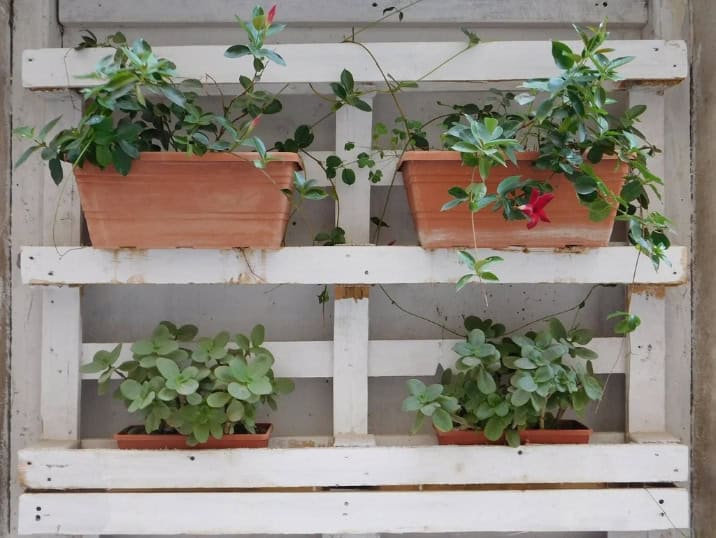
Wooden containers are portable and can function as centrepieces. The best part? You can build your own out of upcycled materials, such as salvaged shiplap boards or a crate. Design the container as you like, but be sure to include sections. Five would suffice so you can replant one herb without disturbing the rest of the planter.
2. Vertical pallet garden
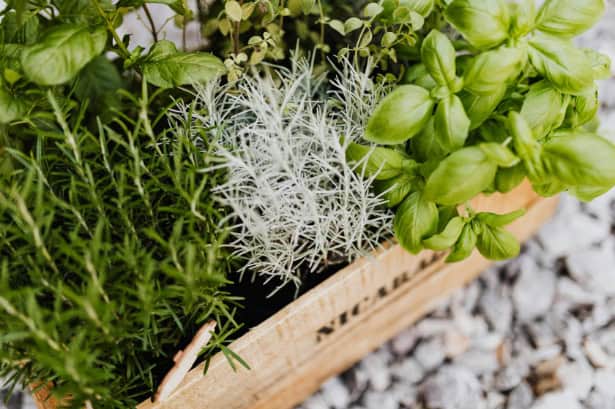
Give an old wooden pallet a second chance at life by turning it into a small, vertical herb garden. You could even hang it on the wall to make the most of your small floor space. This DIY can guide you through the process; check it out if you’re interested!
3. Indoor jar or cup garden
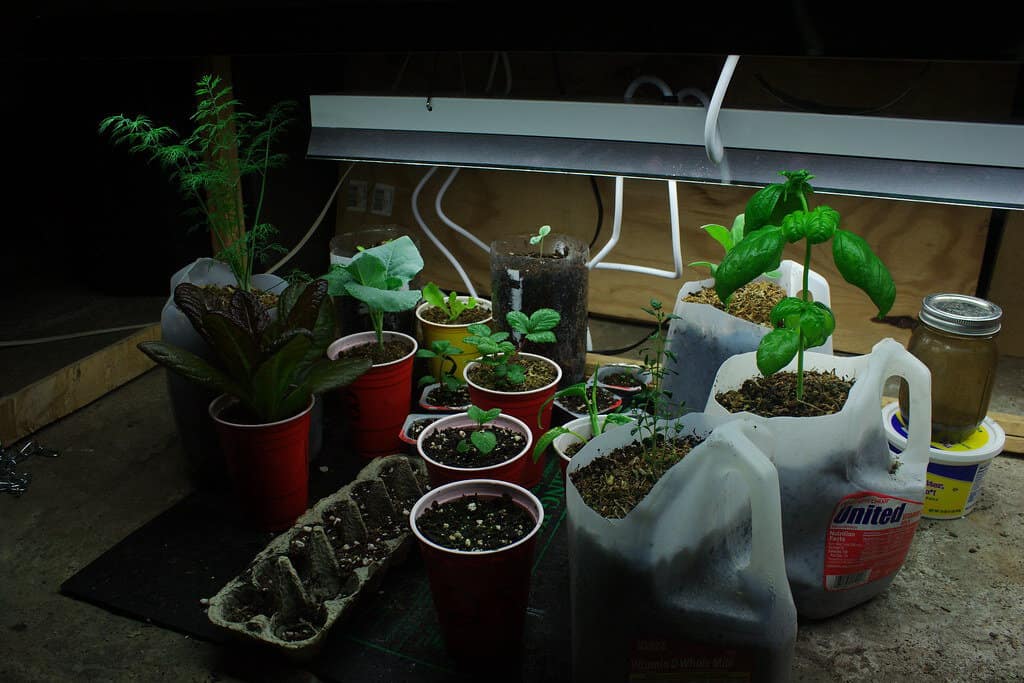
If you’re short on outdoor space for growing plants, your kitchen windowsill could save the day! Small jars or used cups should fit well and house your go-to herb spices for cooking. Fill these containers with potting soil as you would with usual plant pots, and then sow the seeds. Place them in a sunny window, and you’ll have fresh and aromatic flavours in your kitchen year-round.
4. Hang the pots
If you only have space indoors, design your own ‘hanging’ garden using planks and cables. This not only saves space but also brings some colour to a plain wall. And wouldn’t it be nice to have natural, edible greenery near your kitchen? Start building this custom-hanging herb garden using this DIY guide.
5. Tiered cedar planter
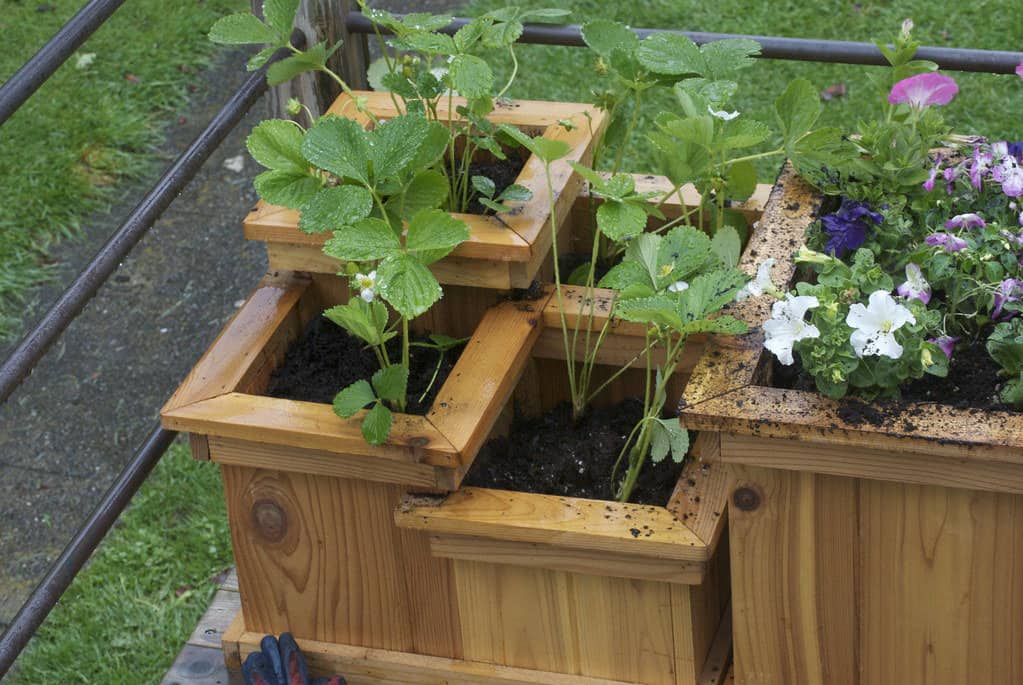
Tiered trough planters could be used inside or out for a great space-saving herb garden. Adding a tall lattice panel allows you to visually fill the height and maximise space. Source old cedar pieces, follow these helpful instructions and get building.
6. Vertically stacked planters
Get the most out of your space! Instead of spreading out, plant your herbs along the edges of stackable planters. The key is using a piece of rebar threaded through the drain holes in the bottom of the pots. You’ll need at least five pots of various sizes, potting soil, and your chosen herbs.
Starting with the largest pot, fill it 3/4 of the way with soil and place the rod in the centre. Plant your herbs along the outer edge, and repeat this process for all five pots. It’s as simple as that!
7. Herb tabletop garden
Make a potted centrepiece that brings herbs indoors! Choose a container you think would look lovely on your table. Set it on a tray to protect the tabletop from moisture damage and excess soil. Adding cotton batting is great for holding moisture, too. Next, fill with soil, plant the seeds, and water sparingly.
Tip: Consider basil, known for its vibrant green leaves, and mint for a refreshing scent.
8. Reuse the cans
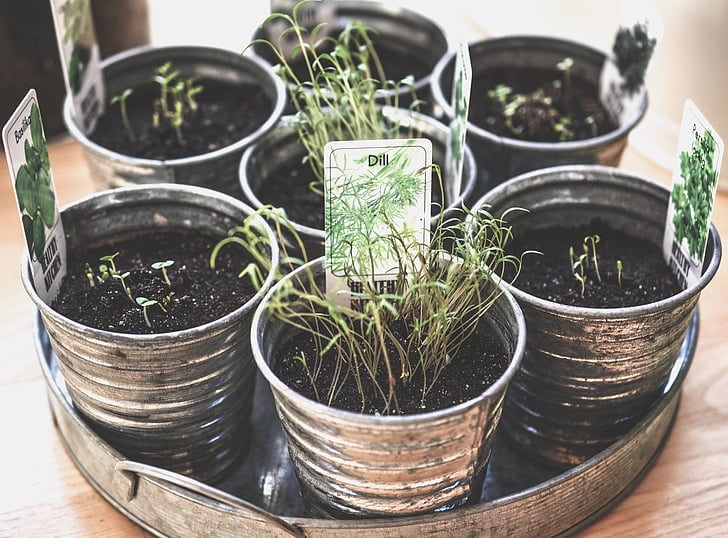
Old cans make excellent plant pot alternatives for several reasons. They’re readily available, inexpensive, and can add a rustic touch to your garden decor. Plus, repurposing them helps reduce waste.
Drill drainage holes in the bottom of each can, fill them with potting soil, and plant your herbs. Paint them in vibrant colours or patterns for a personal touch. You can also hang them on a DIY pallet trellis for a vertical gardening approach.
9. All-in-one pot
Keep it simple with a miniature herb garden, also known as an all-in-one pot! This concept involves planting multiple herbs in a huge pot at least 12 inches in diameter. The larger the container, the more herbs you can grow. Basil and mint require more space to thrive, while thyme and oregano can survive in a smaller pot of around 8 – 10 inches.
10. Reuse your old shoe organiser
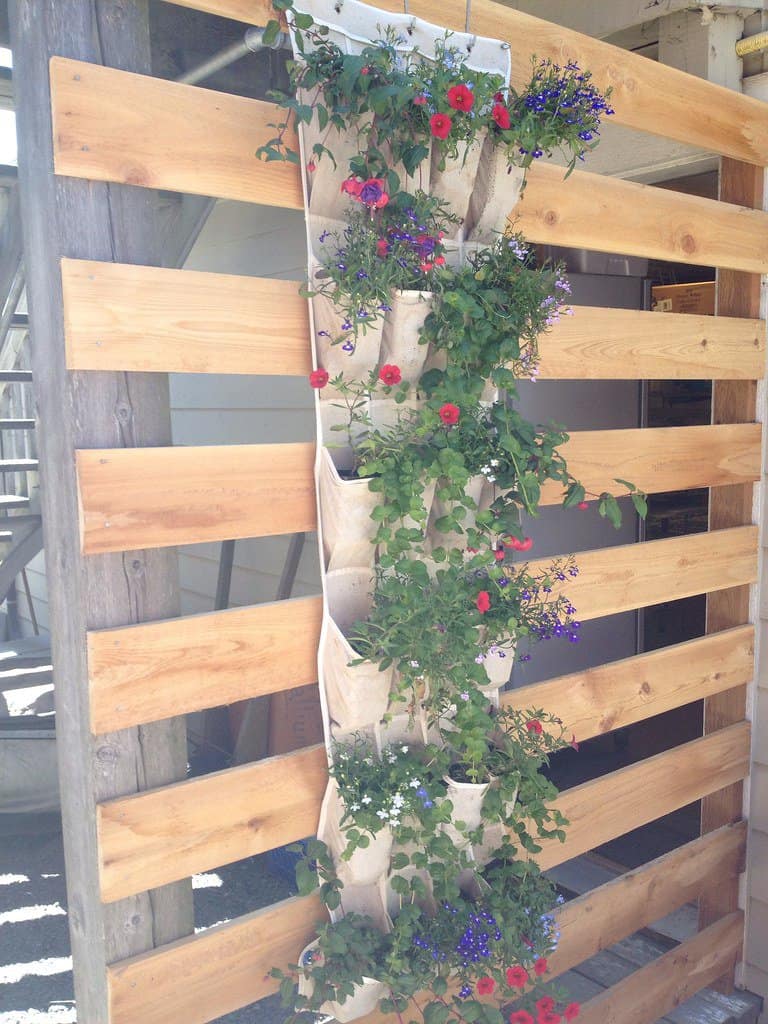
Running out of garden room? An old cloth shoe organiser will have you growing a vertical herb garden in no time — just add herbs of your choice. Make sure the rack can support the weight of the soil, water, plants, and the caddy itself.
Poke a few smalls in the bottom of each pouch if there’s no enough drainage in the fabric. Use rod, hooks, or nails to hang on a fence or your balcony railing.
Round-up
Herbs are great for beginner gardeners as they’re easy to grow and they take very little effort to get started. Plus you won’t have to buy them from the supermarket anymore, just trim them from your own herb garden!
Hopefully, we’ve provided some useful ideas for planting your own herbs using the space you have to spare. If you can fit small-sized, portable greenhouse, consider this easy-fit frame.
If you have any further questions, please don’t hesitate to contact us at 01909 768840. Next on your reading list: How to Start a Garden Greenhouse





